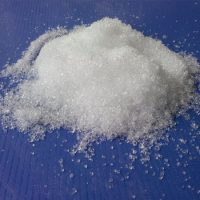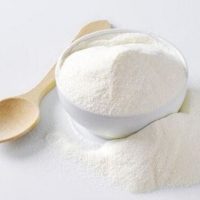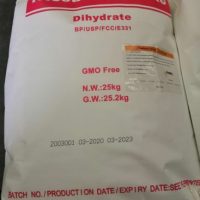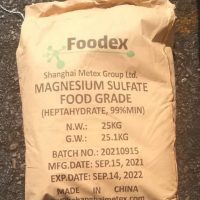Acetic acid
- CAS Number: 64-19-7
- Appearance: liquid
- Purity:%
- Made in: China
- Phone Num : +86-2150591759
- E-mail: info@shanghaimetex.com
- Description
- analysis
- shipping & delivery
- Product Specification
Description
Acetic acid falls into the category of organic acids or carboxylic acids and is known by the chemical formula CH3COOH. IUPAC’s name for this acid is ethanoic acid. This product is produced as a precursor of polyvinyl acetate and cellulose acetate. Acetic acid is a synthetic carboxylic acid with antibacterial and antifungal properties. It is one of the simplest carboxylic acids and an important industrial chemical reagent.

Physical and Chemical Properties:
Acetic acid is a liquid that has a sharp taste and a pungent odor like vinegar. But concentrated acetic acid is corrosive and can damage the skin. The freezing point of acetic acid is 16.6 ° C, so at room temperature, it has an icy appearance, which is why it is known as glacial acetic acid. The pH of acetic acid is 4.8, which means that in aqueous solutions, half of the acetic acid molecules are in the form of acetate ions.
| Chemical formula | CH3COOH |
| Molecular Weight(g/mol) | 60.05 |
| Appearance | colorless liquid |
| odor | Sour, vinegar-like odor |
| taste | Burning taste |
| Density (g/cm3) | 1.049 |
| Melting point (° C) | 16 to 17 (61 to 62 °F; 289 to 290 K) |
| Boiling point (° C) | 118 to 119 (244 to 246 °F; 391 to 392 K) |
| Water Solubility | miscible with water |
| Solubility | Miscible with ethanol, ethyl ether, acetone, benzene; soluble in carbon tetrachloride, carbon disulfide |
| Flash Point (°F) | 103 |
| Vapor Pressure (mm Hg at 25 °C) | 15.7 |
| Other names | ethanoic acid, Ethylic acid, Acetic acid, glacial |
| color | Clear, colorless |
| form | liquid |
| Chemical Structure Depiction |  |
Different types of Acetic acid:
- The Acetic acid in the industrial sector, in addition to being soluble in water, has the ability to combine and react with elements such as potassium, zinc, and sodium, and will eventually lead to the production of hydrogen, which has been a flammable substance.
- Acetic acid is used in the food sector in addition to the industrial sector. In the food sector, everyone knows acetic acid like vinegar, which has a sour and sharp taste.
Acetic acid Preparation:
Acetic acid is produced both in the fermentation of bacteria and by chemical composition in commercial quantities. Bacterial fermentation is produced from alcoholic food sources (such as fermented grains, malt, rice, etc.)
produces acetic acid by oxidation of ethyl alcohol (C2H5OH):
C2H5OH + O2 → CH3COOH + H2O
It is produced by the reaction of methanol (CH3OH) with carbon monoxide in the presence of a rhodium-iodine catalyzed.
CH2OH + CO + Rh / I 2 → CH2COOH
Applications and Uses of Acetic acid:
- One of the most important and well-known applications has been the use of acetic acid in the manufacture of vinyl acetate monomer, which is used in many industrial sectors such as adhesives, paints, etc.
- Acetic acid is used in the production of anhydrous acid, which is used in the production of cellulose acetate.
- One of the raw materials for making aspirin was ethyl acetate and acetone.
- In the pharmaceutical industry, it is used as a disinfectant against the growth of bacteria and fungi.
- In the cosmetics sector, acetic acid is used in the production of hair dyes, perfumes, and colognes.
- Used in foods such as vinegar, sauces, pickles, and spices.
- Acetic acid has been one of the most important raw materials in the production of detergents and cleaners.
- This material is widely used in the plastics industry, in the manufacture of plastic containers and bottles, and in plastic and synthetic fibers.
Applications of Acetic acid in the Food Industry:
In the food industry, acetic acid is most commonly used in commercial pickling operations and in condiments such as mayonnaise, mustard, and ketchup. In addition, vinegar can react with alkalis such as baking soda, and when this happens, the compound helps to puff up more goods.

Safety Information:
it is classified as a weak acid. But the contact of the concentrated solution with the skin can be corrosive. It can also cause permanent damage to the eyes and irritation of mucous membranes. Exposure to prolonged inhalation of vapors of this acid can irritate the eyes, nose, and throat. At a concentration of 100 ppm, it irritates the lungs and causes possible damage to the lungs, eyes, and skin.
Packing and storage:
Store closed containers in a cool, dry, well-ventilated area. Store away from strong oxidizing materials.
analysis
shipping & delivery
PRODUCT DESCRIPTION: Acetic acid is used in foods as a flavor enhancer and flavoring agent; an acidifier, color diluent, curing, and pickling agent, pH control agent, solvent, and preservative.
Product Name: Acetic acid
CAS Number: 64-19-7
E Number: E260
Product Specification












